How Hulk inspired Prototype (and how 9 more spiritual successors that came to be)
Can’t legally make a sequel but want to anyway? These 10 games found a way
Brother by a different mother

Wonderful 101 is a brand new franchise for the Wii U, but it looks so... familiar. It only took us a little digging to find out why: the game was made by the many of the developers that made Viewtiful Joe and Okami, both developed by the now-defunct Clover. Those two games were clearly inspirational to Wonderful 101, both in its use of superdeformed superheroes and unlocking abilities via drawing on the screen. It's not a real sequel, since it shares no name or characters or universe, but it's definitely made in the same vein. Thats what makes Wonderful 101 a spiritual successor--but its hardly the first.
Sometimes a developer leaves a franchise (or has it taken away), and that leads them to make something fresh and unique. More often, those same creators will want to return to familiar territory, even if they no longer have legal claim to their old series. Spiritual successors are releases that are basically sequels to your favorite games, just with enough differences to keep the developers out of the courtroom. Here are 10 that captured the greatness of their ancestors, while still managing to create something uniquely new.
Prototype was inspired by Hulk: Ultimate Destruction

The similarities: Despite the sheer awesomeness of the Incredible Hulk, he had yet to have a truly good game until Ultimate Destruction, a sandbox game which let the green beast smash around city streets in new and creative ways. Prototype star Alex Mercer shared Hulks love of free-running and the open-world destruction of a humble metropolis--only, Mercer had a more M-rated approach. Both troubled heroes smashed authority figures, but only one protagonist decapitated them.
Howd this happen? A big problem with making a great licensed game like Ultimate Destruction is that the owner can take away a cool character like Hulk. After Marvel handed Hulks games rights to Sega (that didnt work out well), Radical went on to make a star of their own that could do break into a violent rage without Marvels permission. The Prototype games successfully recaptured that crazy fun. The dev team behind both games have drifted apart, but there's a happy ending here! Hulk/Prototypes lead designer is still in the superheroic open-world game business: hes currently working on Batman: Arkham Origins.
Bayonetta was inspired by Devil May Cry

The similarities: DMCs Dante is a mysterious, magically gifted man born from a forbidden love, and he works as a professional demon hunter whos armed with twin pistols called Ebony and Ivory. Bayonetta is a mysterious, magically gifted woman born from a forbidden love, and she works as a professional angel hunter whos armed with twin pistols called Scarborough Fair. Both star in combo-heavy action adventure games with shocking twists, giant bosses, and rivals that look remarkably identical to them (perhaps even their long-lost twins).
Howd this happen? Hideki Kamiya and his fellow Capcom employees (collectively known as Team Little Devils) turned a Resident Evil prototype into a trailblazing action franchise, but Kamiya left to work on Viewtiful Joe while the series continued. When Kamiya and many of his former collaborators left Capcom to start Platinum Games, the group known as Team Little Angels started Bayonetta. Beyond the dev teams name, Kamiya dropped in numerous winks and nods to DMC, as well as some other Capcom titles.
Torchlight was inspired by Diablo

The similarities: Baldurs Gate may have popularized dungeon crawling first, but it was Diablo that made it huge. Blizzards fantasy adventure was all about collecting loot and slaying demons from an isometric perspective. Torchlight had the same combat, camera perspective, and randomly generated dungeons as the original, but with the added benefit of HD graphics and helpful pets that saved you a trip to the merchant.
Weekly digests, tales from the communities you love, and more
Howd this happen? The team at Blizzard North created the multimillion-selling titles Diablo and Diablo II; in 2003, many of the key devs left to try something new. Those guys formed Flagship Games to create Hellgate: London, a Diablo-inspired title that flopped straight out of the (hell)gate. The team then started on a far more obvious Diablo recreation called Mythos right around when Flagship shut down. Most of that team reformed as Runic Games, and things got REALLY meta as they developed Torchlight, the spiritual successor to Mythos, which in turn was the spiritual successor to Diablo. All the franchise musical chairs eventually paid off for Runic, as a number of fans preferred the Torchlight series to Diablo III.
Perfect Dark and Timesplitters were inspired by GoldenEye 007
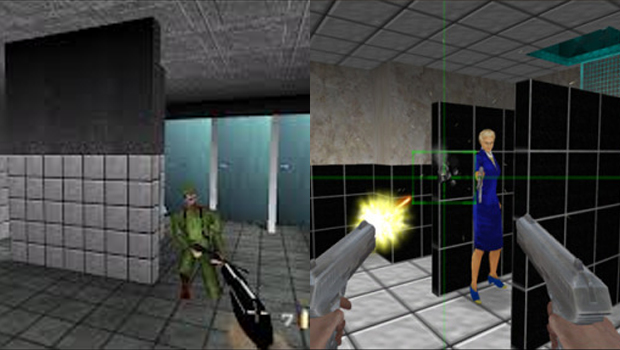
The similarities: By 1997, people had lowered their expectations for movie tie-ins. So it came as a shock that a game starring James Bond would game to introduce competitive FPS gameplay to millions of console gamers. Perfect Dark recaptured GoldenEyes entire approach to shooting gameplay, but brought it into a sci-fi setting. Timesplitters had similar tempo and style, but later entries made the multiplayer even wackier by adding monkeys to the mix.
Howd this happen? Rare had been mainly known for platformers before making a GoldenEye. And even though it launched almost two full years after the film, GoldenEye 007 was a huge smash. Rare chose to leave the world of Bond to make its own shooter on the same game engine, which launched as Perfect Dark in 2000--but its troubled development saw several key members of Rare leave the company. Those that left formed Free Radical and swiftly put out Timesplitters in 2000 as well. The PS2 titles graphics easily outdid Perfect Darks, but the gameplay similarities were all too obvious. The franchises carried the GoldenEye torch for a time, but currently both are gathering dust.
Tear Ring Saga was inspired by Fire Emblem

The similarities: Yeesh, where do we start with this one? Theres a grid-based map, turn-based battles, a fantasy setting, dungeons and dragons, a story told through a series of static talking heads, and characters taken from the standard JRPG tropes. Seriously, you could probably swap the intro screens and logos without anyone noticing this Fire Emblem game was actually Tear Ring Saga--unless they looked down at the PlayStation controller in their hands.
Howd this happen? Nintendo doesnt have much of a history of its top talent jumping ship, but thats exactly what Shouzou Kaga did in 2001. It was Kaga who created the Fire Emblem series for Nintendo in 1990--a series he oversaw until he left to start a company called Tirnanog. Tirnanogs first game was the PlayStation exclusive Tear Ring Saga, and the similarities were blatant, including character designs created by former Fire Emblem artist Mayumi Hirota. Nintendo sued over this but lost, though they likely wouldnt have if the Tear Ring Saga launched under its original name: Emblem Saga.
Lost Odyssey was inspired by the Final Fantasy series
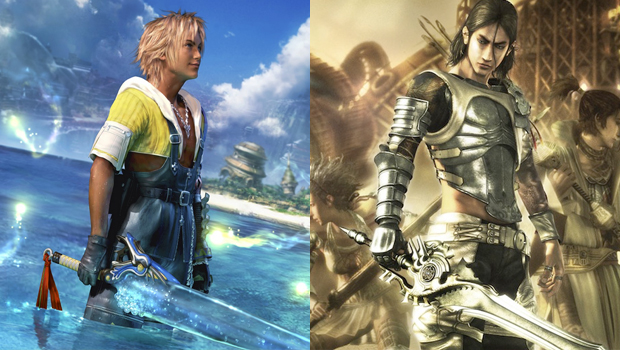
The similarities: Gameplay similarities like turn-based battle systems, magic spells, party members, towns, and an overworld are all intrinsic to the JRPG genre, but this similarity goes a bit deeper. The steampunk-meets-Tolkien world is the basis for Final Fantasy VI-X as well as Lost Odyssey, while LOs immortal leads suffer from amnesia, a malady suffered by too many FF characters to name. Just like later FFs, LOs story is told through a number of epic, melodramatic cutscenes. And as a final capper, LOs soundtrack is the work of Nobuo Uematsu, the composer for the vast majority of FF games.
Howd this happen? Hironobu Sakaguchi created and oversaw the Final Fantasy franchise all the way up to Final Fantasy X, and eventually made a full-fledged Final Fantasy movie. That film was poorly received, very unprofitable, and pushed Square to the brink of bankruptcy, which led to Sakaguchis dismissal. A couple years later, Microsoft was in desperate need of exclusive games to sell Japanese audiences on the Xbox 360, so MS helped Sakaguchi fund the creation of his new dev company, Mistwalker. Its hard to tell whether it was Sakaguchis desire to make a game so similar to FF or Microsofts, but Lost Odyssey was the result, alongside Blue Dragon, a game with unmistakable similarities to Dragon Quest. Neither made the 360 a hit in Japan, and Sakaguchi would go on to direct yet another spiritual successor to FF: The Last Story for Wii.
Call of Duty was inspired by Medal of Honor
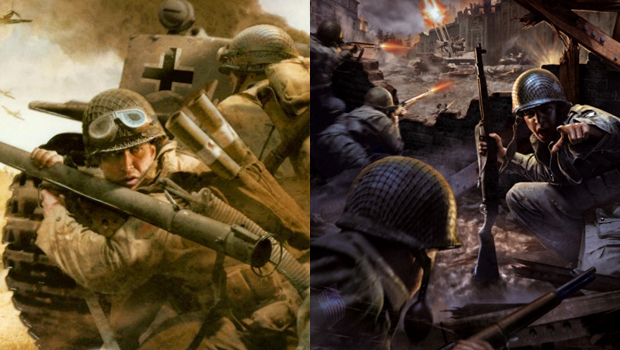
The similarities: Ignore the fact that its been about five years since either franchise had a WWII setting, because thats what originally connected Medal of Honor and Call of Duty back in the day. Both franchises cast players in the role of the greatest generation: the Allied soldiers that fought their way across Europe and Japan. Both were aesthetically informed by Saving Private Ryan, and both had addictive multiplayer backing up the compelling single player.
Howd this happen? By the mid-00s, there seemed to be countless WWII shooters called ____ of _____, but Call of Duty was a special case. Medal of Honor was created as a collaboration between Steven Spielberg and EA, and no entry in the series was more popular than Allied Assault. That was made by 2015 Inc., but the main dev staff for that game stopped working with EA to form Infinity Ward with the backing of Activision. While EA kept the MoH ball rolling after Allied Assault, Activision launched its WWII competitor, Call of Duty, to stronger reviews. Soon enough CoD outsold MoH (and pretty much every other game), especially after Infinity Ward convinced Activision to allow the fourth CoD to have a modern setting. In an odd twist, the core dev team at Infinity Ward would ultimately leave Activision to form a new studio with backing from EA, and are now working on what looks to be the spiritual successor to Call of Duty, Titanfall.
Demon's Souls (and then Dark Souls) was inspired by Kings Field
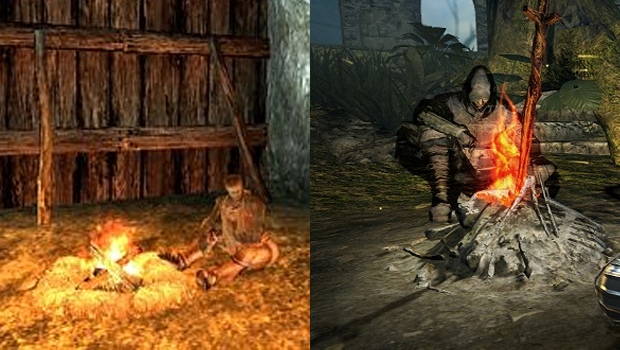
The similarities: Most western players barely remember Kings Field, but like the Souls games, KF was set in a fantastical, dying land overrun with horrifying monsters. Both Kings Field and Demons Souls had punishing action-RPG gameplay that demanded much from players, bosses that required trial and error to exploit their weaknesses, and a possessive apostrophe in the title. And players died in both games a lot.
Howd this happen? From Software is one of the most popular and hardcore developers in Japan, and they created four different Kings Field titles exclusively for Sony consoles. Sony then agreed to publish From Softwares Demons Souls, and the games director, Hidetaka Miyazaki, explicitly stated that Demons Souls would be a spiritual successor to Kings Field. Demons Souls went on to be a bigger hit than Kings Field ever was, particularly in the West. But Sony published the game, so any sequel would likely be a PS3 exclusive, as with the original. So From Software started work on the multiplatform Dark Souls, a title that was virtually Demons Souls 2 in all but name. Currently the team is working on Dark Souls II, so it seems like theyre done with crafting spiritual successors for now.
Fallout was inspired by Wasteland
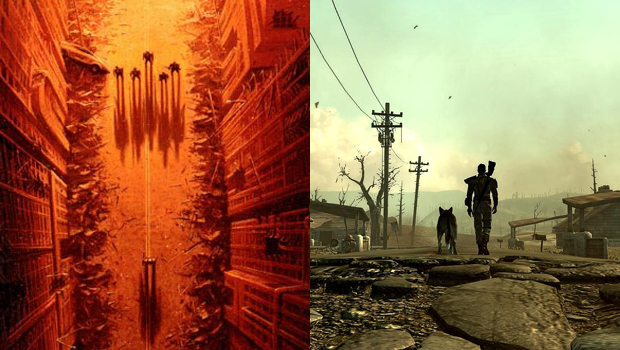
The similarities: Wasteland and Fallout are both Western-style RPGs that throw players into a post-apocalyptic world, where the remnants of humanity are trying to piece society back together. Both titles deal with nuclear fallout spread across a wasteland, where players control a group of highly-trained survivors looking for answers. And each franchise took a humorous approach to its ultra violent combat.
Howd this happen? EA published Wasteland in 1988 as part of a publishing deal with rising PC game developer Interplay. When Interplay was publishing its own games in the mid-90s, its internal team at Black Isle Studios began working on a new Wasteland--only to find out EA still owned the rights (despite doing little with the franchise). Black Isles successfully reworked it into the Fallout series for Interplay, until the company fell on hard times and gave the rights to Bethesda. As a strange epilogue, the team at Black Isle went on to form Obsidian, the team currently working on the Kickstarted Wasteland 2, which may end up feeling like a spiritual successor to older Fallout entries.
BioShock was inspired by System Shock 2
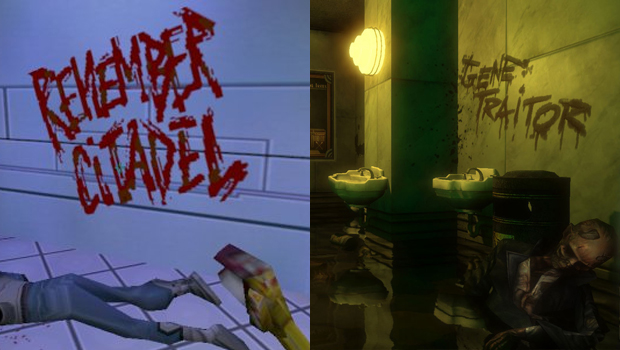
The similarities: Tell us if youve heard this one before: A man with loose memories of his former life is dropped into a strange world where science has been allowed to run wild. The hero is continually upgrading his abilities with morally dubious technology, all while being guided by an unseen adviser. Eventually a mid-game twist that changes everything you thought you knew about the game. The similarities between the two are deeper than that, but we dont want to get too spoilery.
Howd this happen? Ken Levine joined Looking Glass Studios to work on the first Thief game, and soon enough he was ready to form his own studio with several other Looking Glass employees. Instead of getting mad about the defection, Looking Glass hired the newly minted Irrational Games to make a sequel to System Shock. It was a huge critical success, and when Levine wanted to make a new FPS with similar themes, he was very open about the fact that BioShock took clear inspiration from System Shock 2. Levine took the concept of shared thematic similarities even farther with BioShock Infinite, making the repeated similarities between all the Shock games an important story point.
Kickstart a successor

Thats our helpful guide to past spiritual successors, but prepare yourself for an onslaught of them thanks to a number of creators turning to Kickstarter. Follow ups to Wing Commander, Maniac Mansion, and Eternal Darkness are possible now thanks to the crowdfunding movement. Tell us what youre looking forward to the most in the comments!
And if you're looking for more franchise development, check out gamings best (and worst) franchise handoffs and your favorite game developers before they were famous.
Henry Gilbert is a former GamesRadar+ Editor, having spent seven years at the site helping to navigate our readers through the PS3 and Xbox 360 generation. Henry is now following another passion of his besides video games, working as the producer and podcast cohost of the popular Talking Simpsons and What a Cartoon podcasts.



